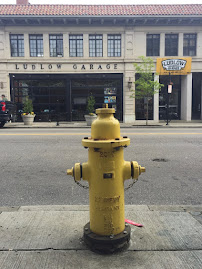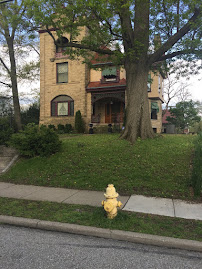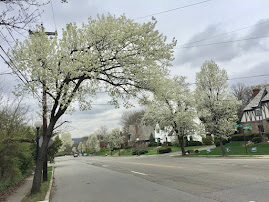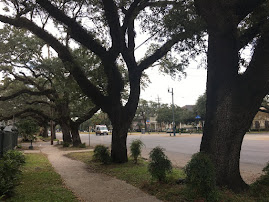
Dear George,
According to Thomas Wolfe, “You can’t go home again” — truly a paradox since we tend to regard home as the safe place we can always return to. Wolfe reminds us that change is an ever-present feature of reality. In effect, the world we return to is never the same as it used to be and we ourselves have inevitably changed as well. Still, “going home” remains emotionally powerful because it involves reconnection with one’s past, if only through one’s memories.
I left my home town for college when I turned 18. While I wasn’t to be a full-time resident again, I’ve visited regularly over the years. In certain ways Menominee is exactly the same as it was in the 1950’s. The magnificent natural environment is unchanged, with the town’s southern border stretching along the Menominee River and its eastern border along the Green Bay shoreline. The three auto bridges to Wisconsin are in place. The layout of streets is identical, and virtually all of the buildings are the same. And many of the important landmarks remain, e.g., the courthouse, the library, the marina, the Presbyterian Church. I made a list of 70 important places in my youth. About a third of them are still there. Ten have relocated to other parts of town or to Marinette across the river, e.g., the hospital, the newspaper, my high school. But over half of the significant places of my youth are gone. Thinking about these losses, I decided to poetically commemorate some of Menominee’s places that no longer exist. Here are some of them.
Love,
Dave
THE OFFICE SUPPLY STORE
Age four, Mom took me to the store
A pencil, an eraser, sometimes more
Ogden Ave, a long walk
I don’t think we’d talk
Talk or not, this trip made my heart soar
BOSWELL GRADE SCHOOL
Boswell kindergarten, my very first job
A nervous twit, I was scared of the mob
I walked there with Sally
My five-year old pally
Temp zero, we peanuts would sob
WASHINGTON GRADE SCHOOL
First grade, begin Washington, downtown
Thrilling times there on the playground
Playing boys chase the girls
All racing in whirls
When the bell rang, Teach said to calm down
THE LLOYD THEATER
The Lloyd, my very first movie at night
“Meet Me in St. Louis” — such delight
Margaret O’Brien, so swell
Judy Garland, a sweet belle
I now was a big kid all right
THE A&P GROCERY
The A&P carried yummy things to eat
Creamy pastries, avocados, fatty hamburger meat
We were often low on cash
So my mom would make hash
But some days she’d buy me a treat
G.I. SURPLUS
G.I. Surplus was my favorite store
Selling gas masks, machetes, and more
I’d buy camping gear there
Khaki mittens to wear
And the gadgets we used to play war
THE IDEAL DAIRY
The Ideal on the west edge of town
Open daily from dawn to sundown
Two dips for a nickel
Cheaper than a pickle
Their lemon flake cones, we’d melt down
THE MENOMINEE HOTEL
The hotel was right on the Bay
Known by travelers as a fine place to stay
Our glee club sang there
For the Lions Club’s fare
I can still hum those tunes to this day
ST. JOHN’S CATHOLIC CHURCH
The O’s would take me to Sunday mass
A ritual, for sure, of high class
Our family weren’t Catholics
At best Lutheran mavericks
But I hoped for a heavenly pass
THE FIVE AND DIME STORE
The Five and Dime if you wanted a deal
My Christmas gifts, they were a steal
Red ribbons for my mother
A cap gun for my brother
And the Topps baseball cards were surreal
THE SMELT RUN
The smelt run arrived every spring
Huge nets our fishermen would bring
We would wade in the river
Though the cold made us shiver
Then we voted for the queen and the king
THE MENOMINEE THEATER
The Menominee was near to the Bay
Saturdays, the kids’ matinee
They charged just one dime
For a rowdy fun time
Charlie Chan was the best, I would say
THE D.A.R. BOYS CLUB
I’d go to the DAR after school
Pick and I played a few games of pool
Then basketball with Jack
Who could dribble behind his back
For aspiring pros it was cool
ST. JOSEPH-LLOYD HOSPITAL
We started life at St. Joseph-Lloyd Hospital
And returned once or twice when still little
Steven busted his arm
Which we viewed with alarm
But they sculpted his cast, made him fittle
UNCLE KENT’S REXALL DRUGSTORE
Uncle Kent’s store was right on the Square
School days, my brother and I would lunch there
Read the new comic books
Batman battling the crooks
The tuna fish sandwiches, just fair
COONEY’S GAS STATION
Harry Cooney’s was also on the Square
We filled up the Lincoln right there
But they forgot to check the oil
Caused the engine to boil
Cost my dad a major repair
CITY BUS
The city bus circled the Loop
Friday nights for Rick and his group
They’d flirt with the gals
Fool around with their pals
Tell the driver the latest teen scoop
PRODUCERS DAIRY
Producers Dairy on Sheridan Road
Three blocks from our family abode
I’d stop by from school
Chocolate chip made me drool
But butterscotch, I would explode
M&M BREWERY
The Brewery made Silver Cream beer
A golden brew that fostered much cheer
I knew guys who drank Silver Cream
Mostly dudes on the football team
But myself and my group had beer fear
THE VOGUE
The Vogue was my mother’s favorite store
For dresses and hats and much more
Not as fancy as Green Bay
But it didn’t take all day
Plus she always found something she wore
THE GATEWAY CAFE
The Gateway. our teenage hangout
Near the hospital, right on our route
A grilled cheese and French fries
Chocolate malts for the guys
Football nights, we would give out a shout
GARBELL’S SODA SHOP
Garbell’s, across from M.H.S.
A retreat from academic stress
Pinball in the rear
We would gather round and cheer
Earl Powell, pinball king, such finesse
FOUND MENOMINEE
True, my world’s no longer there
But change is a curious affair
New restaurants, new shops
Many interesting stops
Menominee still has its flair

























































































































































